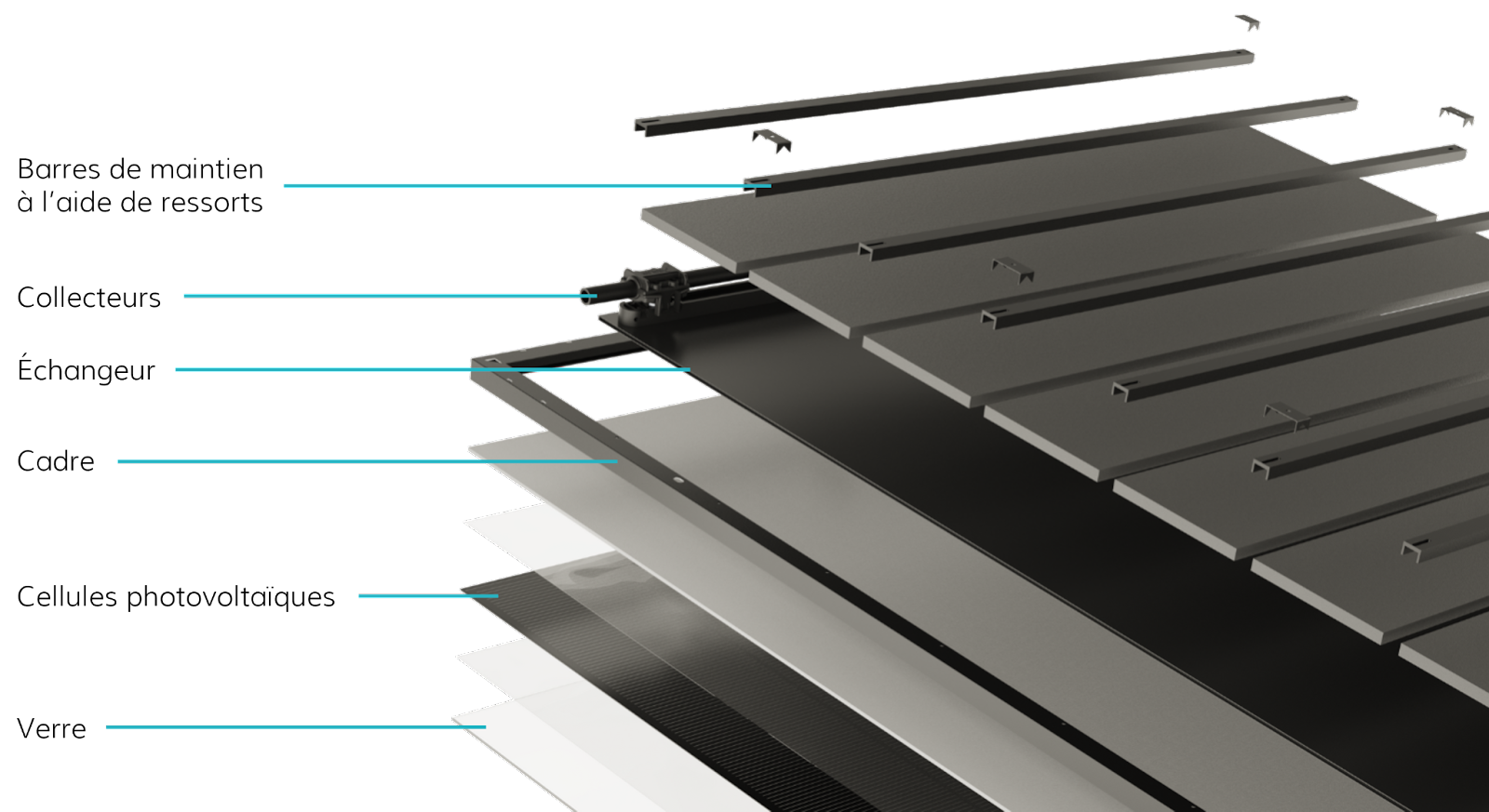What is the heavy metal content of Dualsun panels?
First of all an important point of reminder: Our panels are not affected by rare earths.
A solar panel is a laminated assembly of several components, mainly glass to encapsulate the components and silicon, the basis of photovoltaic cells. Between the cells other metals may be present (especially copper) but their mass is very low compared to all the elements that make up the panel.
Heavy metals do not currently have a precise scientific definition, however from a legal point of view Europe decided by proposing in 2000 a definition which is valid for European law and that of the Member States.
"Heavy metal" designates "all composed of antimony, d'arsenic, cadmium, chrome hexavalent, copper, lead, mercury, nickel, sélénium, earth, thallium and pewter as well as these materials in metallic form, insofar as they are classified as dangerous substances”.
Two Guidelines defining acceptable rates have been written following this: 2011/65/EU (RoHS) And °1907/2006 (Reach). The reach regulation is more complete and does not only concern heavy metals.
In order to ensure that our panels do not present any danger to health or nature, we pass these tests for our panels and you can find them on our technical documentation page (we invite you to use the search bar for an easier access). |
The hydraulic part of the Dualsun SPRING panels (polypropylene exchanger and EPDM connectors) is not composed of heavy metals.
To find out more: What is the quality control process for Dualsun FLASH panels?

